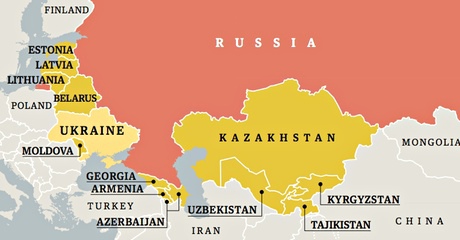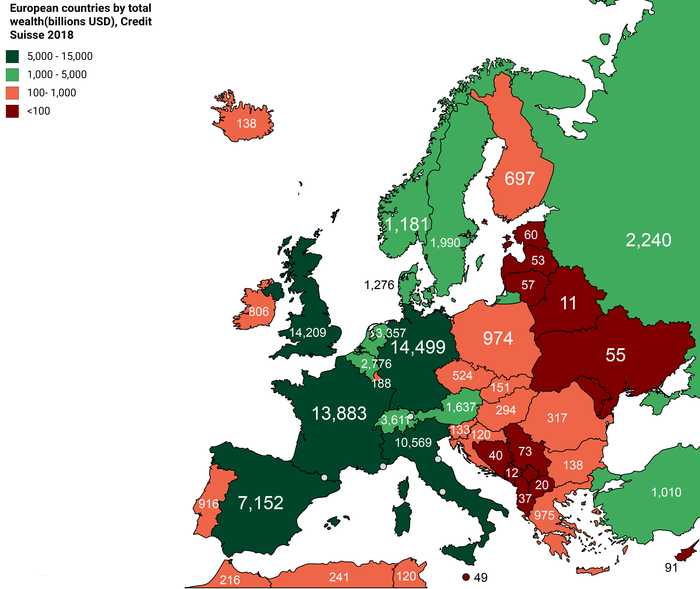The Countries Razed by the USSR
In Estonia, the average yearly salary is $16,310, the highest among the ex-Soviet countries. Tajikistan has the lowest, coming in at an average of $880 per year. The Soviet Union left the parts of Central Asia and Eastern Europe that it occupied unstable and economically challenged, and the effects can still be seen to this day. Moldovans struggle with human trafficking, Kyrgyzstanis with ethnic violence, and all of them with poverty and government corruption.
In 1955, the Warsaw Pact was formed, and the Soviet Union annexed several Eastern European countries: Albania, Bulgaria, Czechoslovakia, East Germany, Hungary, Poland, and Romania. The Soviet Union began to crumble in the 1980s as the economy suffered while trying to compete with the United States, and leadership became increasingly corrupt. The Chernobyl nuclear plant explosion in 1986 angered the public and only added to the growing resentment of the Soviet Government.

In 1990, Lithuania left the USSR, being the first country to do so. After years of executions and repression, the three Baltic states were the first to leave, Latvia and Estonia joining Lithuania. Money in these times was in short supply as well as morale; around 75,000 people from the Baltic states were sent to the Gulags, or Russian work camps, during the Soviet occupation.
The Soviet Union collapsed in 1991, causing dramatic shifts across Europe and Asia. Countries rose out of the ashes of what once was a global superpower unsure how to govern themselves. A rocky start would be an understatement; in years prior, these countries were ravaged with anti-Russian turmoil and attempted coups. They had neither the experience nor the money to set up stable governments.
The first countries to leave the Soviet Union, the Baltic States, have had notably more stable governments and economies than the others. In Latvia, the number of people below the poverty line has shrunk and the exportation of goods has risen, marking great improvements since their union with the USSR. The same goes for Estonia and Lithuania, and while all three states have rebuilt their economies, their success can be partially attributed to their geographical location, an economically valuable shipping position. The Baltic States do not foster a strong relationship with their parent country Russia, but this does not seem to inhibit their economies, as the Baltic States are all considered high-income economies by the World Bank. Leaving the Soviet Union after their respective revolutions and protests in 1989 was a choice that would be seen by all and copied by many of the countries annexed by the USSR.

(Suisse, 2018)
Later in the Soviet exodus were the countries in Eastern Europe. Efforts are being made by the European Union to bring in more Eastern European members and improve the poor living conditions in Eastern Europe. Corruption is common in these young countries, and the United Nations says that a majority of elections held are not free and fair. While the elections may not be fair, many of these countries do not closely resemble communist dictatorships, although censorship is common in places such as Moldova and Belarus. The cultural and religious differences in Eastern Europe mean tensions are high, especially over land disputes such as the Transnistrian Conflict over land bordering Moldova and Ukraine.
Contrary to the bounce-back of Eastern Europe, Central Asia is faring much worse in their attempts to reconstruct both government and economy. In Uzbekistan, a communist government presides over the people, forcing them to pick cotton without compensation for the benefit of the government. There is much to be critiqued about the economics of Central Asia, but economic freedom has also led to higher exports and in turn, created business opportunities. The World Integrated Trade Solution reports that Central Asian exportation of goods has risen by almost 20 percent.
Considerable damage from the collapse of the Soviet Union has made the journey to a high quality of life difficult for the Baltic States, Eastern Europe, and Central Asia, however, efforts of economic reform have been made. The World Bank Group is engaged in Central Asia with the CAWEP, or Central Asian Water and Energy Program. This program helps establish dependable sources of water and energy throughout Central Asia. In Eastern Europe, the European Union loans the government and people money to help stimulate the economy.

With economic growth on the rise and entrance to the European Union a close goal for some, the former Soviet Republics stride towards rebuilding their nations in the wake of the collapse of the USSR. Brutal aftereffects have not stopped the former Soviet satellite countries from trying to strip their governments of the Soviet-style dictators and censorship once and for all.





















































